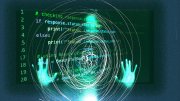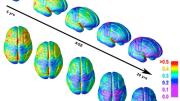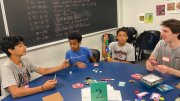In this video, blood pulses through tiny channels in a polymer. The lab group directed by Homans professor of surgery Joseph Vacanti uses a microfabrication technique to mimic blood vessels for use in tissue engineering.
A tissue-engineering application developed in the lab of associate professor of biomedical engineering Kit Parker, demonstrated in this video, uses an elastic film coated with a layer of heart muscle cells; these hybrid structures can engage in lifelike movements.
This video from the lab of assistant professor of computer science Radhika Nagpal demonstrates three ways to use modular robots programmed to work together cooperatively: a table made from a series of robots that work together to keep it level; a simulation of a bridge that would keep itself level even if the ground under it shifts; and a proposed design for a system to render complex three-dimensional shapes using thousands of modules working cooperatively.







